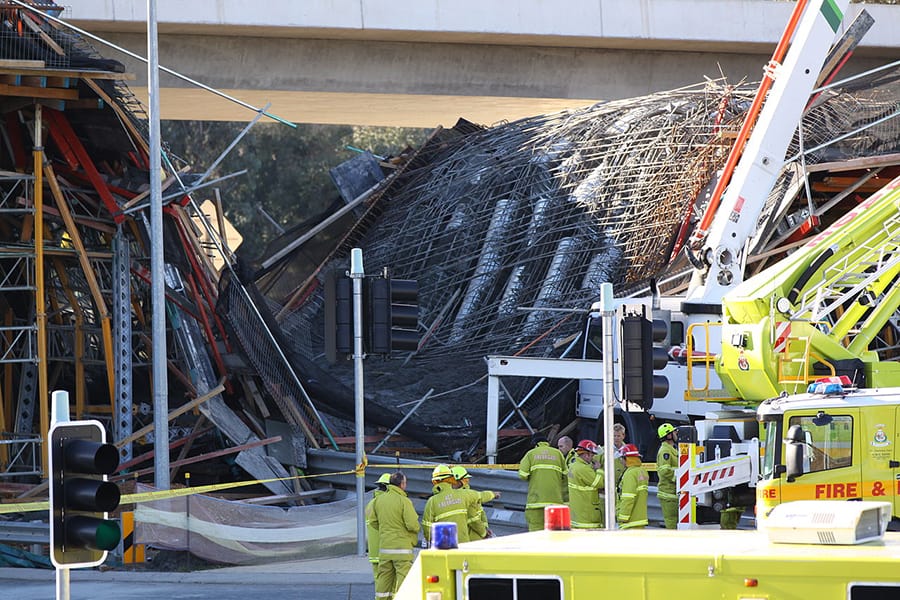Learning from engineering failures is like an adrenaline shot to the heart of technology, pushing it to advance even further.
When engineers take risks and challenge the status quo, failures are gonna happen, and that’s just part of the game. Without them, it means we’re not pushing technology to its limits. Engineers wouldn’t be crafting bigger, faster, and sturdier wonders.
The trick is to invest as much time in dissecting failures as you do in designing. This is especially true when you’re operating on the cutting edge of technology. Failures offer invaluable insights on how to breathe life into stagnant, lackluster designs.
In our chat, we’ll dive into 4 crucial lessons you can learn from engineering failures.
#1 Reverse engineering failures to improve designs

To reverse engineer a failure, you need to have thorough data collection systems in place before testing begins. This includes positioning cameras and sensors strategically. Each test is a golden opportunity to amass data, and the more data you gather, the better equipped you are to enhance your design.
This is particularly vital when a failure could lead to substantial financial losses or put lives in danger. For instance, SpaceX has cameras and sensors peppered around its rocket launch pad. It’s gut-wrenching when a multi-million dollar rocket goes up in flames. But what’s even more devastating is not learning anything from the explosion.
Similarly, cars didn’t just magically become safe for us to drive. Years of testing and crash data have allowed manufacturers to construct secure and reliable vehicles. And as tough as it is to admit, countless lives lost have shaped the car designs we enjoy today – a reality often overlooked when it comes to our modern comforts.
#2 Students learning from engineering failures
In 1940, the Tacoma Narrows Bridge collapsed in a jaw-dropping, spine-chilling manner.
When I first laid eyes on the footage as a child, I was left in awe. I had no idea a solid structure could move like that. It was a colossal disaster, exposing flawed design and engineering.
Yet, amid the wreckage, a glimmer of hope emerged. This engineering fiasco has become one of the most closely examined structural design failures. Students from all walks of life have scrutinized this bridge catastrophe, absorbing the significance of thorough analysis for bridges and all other creations.
Fast forward to today, bridges are grander, more expansive, and safer. This proves that sometimes taking a step back paves the way for leaps and bounds forward.
#3 Navigating pitfalls: Risk management in engineering

We all goof up sometimes, but when it comes to engineering, you’ve gotta be on your A-game to best dodge those slip-ups. When mistakes do happen, pinpoint what went wrong, and make your main goal to ensure it doesn’t happen again.
Often, these fumbles stem from a few hiccups in the engineering process. Whether in the physical or digital realm, there are some all-too-familiar hitches:
Physical-world
- Botching the design process (e.g. botched calculations)
- Skipping thorough checks on all assembled parts and components during construction and manufacturing
- Depending on third parties for quality assurance
- Using uncalibrated equipment
- Ignoring scheduled maintenance
Digital world
- Coding mistakes and/or using incomplete code
- Neglecting software and security limitations research
- Outsourcing essential software parts to other firms
The cause of these issues typically defaults to the following:
- Insufficient design reviews by qualified reviewers
- Absence of a set protocol for design steps, leading to engineers bypassing crucial design steps
- Shoddy documentation, complicating design review, especially after a failure
- Junior engineers taking the lead on projects instead of seasoned senior engineers
- Playing fast and loose with codes and regulations
Addressing these issues can substantially reduce engineering failures.
But sometimes, people get a little too cocky. Picture baking the same cake a thousand times. By the 1001st attempt, you’d probably skip measuring every ingredient, right? Well, some engineers fall into that trap too. They might think they’ve got a natural knack for their work, but others might see it as just plain lazy. Either way, it’s a risky move that goes against engineering ethics.
Remember, unlike baking the same cake, no two engineering projects are exactly alike.
#4 Preventing engineering failures through ethics
Effective risk management goes hand in hand with rock-solid engineering ethics. Whether you’re a P.E. license holder or working in a license-exempt field, you owe it to the public, your clients, and your employer to:
- Practice only within your area of expertise and qualifications
- Prioritize safety, health, and welfare of the public in all your work
- Be truthful and objective in public communication
- Avoid deception in all aspects of your work and interactions
- Uphold high ethical standards to maintain the engineering profession’s integrity
By staying ethical, you can prevent a ton of engineering failures—especially those resulting from negligence.
Conclusion
Mastering the art of learning from engineering failures is no easy feat. But once you’ve nailed it, you can safely refine technology without repeating the same blunders, and make fewer mistakes overall.
Unfortunately, today’s mind-blowing innovations carry a heavy burden—countless lives lost over the years. No engineer wants a disaster on their hands. But when pushing the envelope, slip-ups are bound to happen. So when they do, milk them for all the wisdom they’re worth.
What are your thoughts on failures in engineering? What do you think we can learn from engineering failures?
Featured Image Photo Credit: Richard (image cropped)
